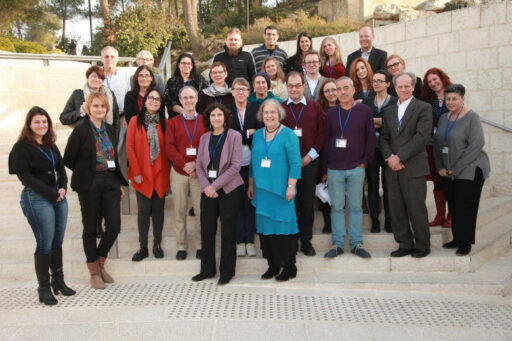International EHRI Workshop on Holocaust Art

An Essential Tool for the Methodology of Constructing a Historical Narrative
The ethical role of the witnesses of Holocaust atrocities have manifested in their commitment to record for the generations to come, forcing us to confront the horrors with our own eyes. By facing reality via the visual arts, the Holocaust no longer can be defined as indescribable; it constitutes a reaffirmation of the human experience by the mostly Jewish victims.
With this in mind, EHRI partner Yad Vashem organized an international EHRI workshop on Holocaust Art which took place in Jerusalem, on 9-11 February, 2015. Art curators, art historians and researchers from 8 countries gathered to explore the role of the visual arts in the attempt to build a historical Holocaust narrative, examining the phenomenon through an array of approaches.

Visual culture broadly defined
In his opening remarks, Avner Shalev, Chairman of the Yad Vashem Directorate, emphasized the importance of art on two levels: first, the interweaving of art as historical testimony in Yad Vashem’s Holocaust History Museum, and second, the importance of seeing art and its creation, during the harshest of circumstances, as a component that preserved the artists’ human spirit. He was followed by keynote speaker Prof. Barbara Kirschenblatt-Gimblett, Director, Core Exhibition, POLIN Museum of the History of Polish Jews, who spoke on “Felt Facts: The Role of Art and Culture in the Holocaust Gallery at POLIN Museum”.
In this presentation, she argued for a removal of focus from art specifically, to an emphasis on visual culture broadly defined.
Integration of Holocaust art
The discussion began with presentations on topics such as art and the historical context; the language of art: the hidden testimony; and the artists as recorders of history. Once the stage was set, the workshop addressed the matter of building a methodology, and several examples of the integration of Holocaust art in the narrative of museums were presented.
Looted art
The final day diverged from the central theme of the workshop to focus on another aspect of art and the Holocaust, namely looted art. This topic is particularly relevant to Holocaust documentation and the core activities of the EHRI project. The series of presentations addressed the Nazi art confiscation apparatus and resources for provenance research.
Intense three days
At the conclusion of an intense three days, the participants expressed enthusiasm for having had the opportunity to exchange knowledge and ideas with colleagues in the intimate atmosphere of this first of its kind workshop. As at all the EHRI expert workshops, the participants emphasized the need to continue the exchange in various frameworks, including EHRI. In addition, they stressed the necessity to acknowledge Holocaust Art as part of the mainstream in the field of Art History.
Please find the full programme here.
Photo 1: participants EHRI Workshop on Holocaust Art. ©Yad Vashem
Photo 2: keynote speaker Prof. Barbara Kirschenblatt-Gimblett, Director, Core Exhibition, POLIN Museum of the History of Polish Jews. ©Yad Vashem
